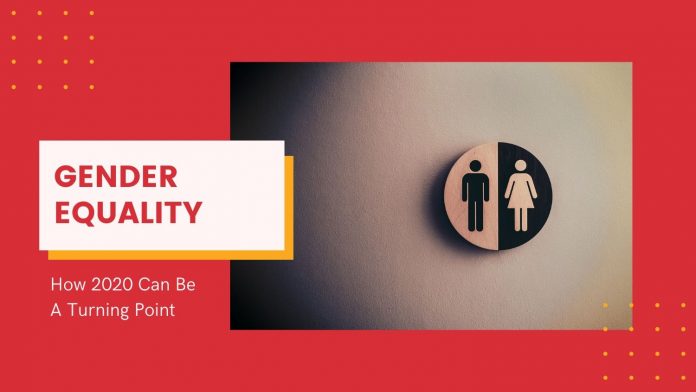Famous British novelist, playwright and poet William Golding (1911-1993) tries to answer a question in his novel Lord of the Flies that is still being asked today: why is there no girl in his group of boys?
First, of course, he says that he’s been a little boy himself and knows them better than little girls since he’s never been one. Just like he’s been a brother, a husband, a father and so on. Not a sister, a wife, or a mother.
Far more important is what he says next. ‘I think women are foolish to pretend they are equal to men; they are far superior and always have been.’
Thankfully, 100 years on, women are empowered to vote, get an education and even form governments as Finland demonstrates in 2020, putting women in charge.
What’s Significant About A Government Led by Women in 2020
Big global newspapers like The Independent, The Guardian and Forbes reported the big news in mid December about the new Finnish government being led by women.
Finland, with just 338,440 square kilometres as its national boundary, and an estimated population of 5.53 million in 2019, took the world by storm as people were getting ready to celebrate Christmas and welcome 2020 with the youngest prime minister in the world being a woman.
Sanna Marin, 34, Finland’s current prime minister, leads a five-party coalition government, centre-left politically, with women leading every party. Three other female party leaders are also under 35 years of age, with only the Swedish People’s Party of Finland having a leader who is 55 years old.
Is it surprising that such news catapulted Finland into the centre of global attention overnight? Not really, since this has not happened before in the history of what we know as the modern world or even the post-modern world.
Gender Equality: A Quick Review
Gender equality and empowerment of all women and girls is at number five on the Sustainable Development Goals (SDG) agenda, guiding global governance during 2015-2030. For the 193 countries that are members of the United Nations Organization, at least.
Why do we still have to focus on gender equality in the 21st century when digital advances have revolutionised the way we access information and connect with each other? Unfortunately, we’ve still got a long way to go, but we’re certainly heading into the right direction, at least in the western world.
The UN informs us that a minimum of 200 million women and girls have had to undergo forced female genital mutilation, about half of them concentrated in West Africa. Women constitute 39% of the global workforce and only 27% of managerial positions.
As recently as 2018, 30% of women globally aged 20-24 had been married before the legal age of 18. Among women aged between 15 and 49 who have a partner, 18% have faced physical and/or sexual violence from the partner at least once.
Clearly there’s still a lot of work ahead of us to achieve gender equality, but with increasingly more women in politics and leading roles worldwide, a difference can be made as the Nordic countries demonstrate as leaders in gender equality.
Special Focus: Women in Politics Worldwide
The number of women in national parliaments increased from 19% in 2010 to 24.3% in 2019. Considering that half the world’s population are women, this is more than a sorry picture. It is worth taking a deeper look to understand why the new Finnish government is such an important event.
UN women worked with the Inter-Parliamentary Union to create a detailed analysis of women in politics. It presents the scenario as it was on January 1, 2019. Women were heads of state in only 6.6% countries and headed governments in 5.2% nations.
Of the 24.3% women in the national parliament, 42.5% were in Nordic countries. That is one indicator that these countries have been striding faster than the rest of the world. Non-Nordic Europe had 27.4% women parliamentarians, lower than the Americas (30.7%).
Sub-Saharan Africa is next on the list with 23.7% women in the national parliament. Only 19.6% of parliamentarians are women in Asia, followed by 18.4% of women parliamentarians in the Pacific. The Middle East and North Africa together come last with 18.4% women in the national parliament.
Learning from Nordic Countries for a better Gender Equality Strategy
Girls and women constitute half the world’s population. That’s half the potential of human beings. To keep that repressed and/or unutilised is to miss out on achieving our full potential as humans.
This all-women, mostly young leadership team in Finland is important, more for what it indicates than for what it is. There are lessons to learn. The steps Finland has taken to promote diversity, the measures the Nordic countries as a whole are taking – that’s what the rest of the world needs to learn from.
According to the latest Global Gender Gap report by the World Economic Forum the global top ten countries closing their gender gap are four Nordic countries (1. Iceland, 2. Norway, 3. Finland and 4. Sweden), one Latin American country (5. Nicaragua), one country from the East Asia and the Pacific region (6. New Zealand), three other countries from Western Europe (7. Ireland, 8. Spain and 10. Germany) and one country from Sub-Saharan Africa (9. Rwanda).
For International Women’s Day the World Economic Forum points out: “Nagging gaps remain, including a pay gap as high as 34%.”
2020 will signify a turning point towards gender equality if other countries, such as the Middle East and North Africa, start implementing similar steps towards promoting diversity and enabling women to have equal access to education, politics, equal pay and leadership roles. With passionate and committed political will, of course.






























